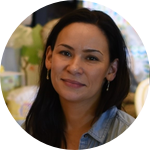About This Project
There is evidence that increasing awareness around cervical cancer could reduce patient loss to follow up in Peru. As such, our group seeks to build on pre-existing models, partnering with hospitals, and NGOs in Peru, to implement a cervical cancer education model, which targets patients after their first appointment in order to reduce loss to follow-up. Metrics of success will be reduced loss to follow up, and increased women being treated.
Ask the Scientists
Join The DiscussionWhat is the context of this research?
Invasive cervical cancer (ICC) affects the lives of 500,000 women worldwide each year, resulting in more than 270,000 deaths [1]. In Peru, ICC is the leading cause of cancer related deaths among women, affecting almost 5,000 women each year [2]. ICC is highly preventable through early screening, diagnosis and treatment of cervical precursor lesions [3]. There is evidence that increasing awareness around cancer, its associated health implications, and possible prevention methods, could have a positive effect to increase uptake of prevention programs by patients and reduce loss to follow up [4, 5]. As such, health education and patient outreach are extremely critical in implementing successful cervical cancer prevention campaigns.
What is the significance of this project?
The multi-visit cervical cancer screen-and-treat paradigm results in a 75% loss to follow-up in Peru, leaving majority of women untreated [1]. Though there have been prior initiatives to implement patient education programs, most have focused on adolescent girls or women unaware of cervical cancer [2,3]. Our group seeks to build on pre-existing patient education methods, partnering with hospitals, clinics and NGOs in Peru, to implement a cervical cancer education model in both urban and rural settings, which targets patients after their first screening appointment in order to reduce loss to follow-up. This would increase the percentage of women returning for disease confirmation and treatment and help reduce mortality from cervical cancer.
What are the goals of the project?
We will target women between ages 30-55 years, the recommended age for cervical cancer screening. We will conduct both one-on-one and classroom style education models. These will include brief, surveys to determine prior knowledge about cervical cancer. We will then provide tailored informationals to the patient on the reasons for the multi-visit approach, address any stigmas and misconceptions, and answer questions and concerns. We will also have patients participate in role play methods: e.g. “how would you convince your husband that screening is important?”. Monitoring and evaluation will be performed with metrics for outcomes of success being reduction of women lost to follow up and increase in women being treated.
Budget
These funds are being raised for part of a larger project, Duke Bass Connections, to introduce a low-cost, point-of-care, cervical cancer screening device to low resource settings in Peru. The project is sponsoring an interdisciplinary group of undergraduate, masters and PhD students as well as Duke global health and engineering professors for a 12 week study in Peru. Though some amount of funding has been provided by the Bass connections program, we haven't met our target which would enable all members of the team to actively participate in the study in Peru for the anticipated amount of time. These budget items listed will go a long way in sponsoring at least one team member as well as offsetting additional costs associated with educational materials, patient compensation and a translator.
Endorsed by
 Project Timeline
Project Timeline
January -March 2018-focus on working with local and Peruvian-based collaborator to obtain the inputs and specifications for patient education model.
March 2018-May 2018-A detailed patient education model will be developed and iterated on through collaboration with Peruvian cervical cancer experts
June – August 2018-Field visits by students and professors for pilot implementation of education model in Peru. Information gathered will be used to optimize model.
Jan 03, 2018
Project Launched
Mar 15, 2018
Obtain the inputs and specifications for patient education model
May 15, 2018
Develop detailed patient education model
Aug 15, 2018
Field visits by students and professors for pilot implementation of education model in Peru.
Meet the Team
Affiliates
Mercy Asiedu
I received a BSc in Biomedical Engineering from the University of Rochester, NY. As a summer research fellow at the Mayo Clinic, I developed a Matlab based guide user interface to process clinical elastography data from breast and thyroid cancers. This generated an interest in the applications of biomedical imaging to cancer. At Duke, I work on developing imaging tools and algorithms for speculum-free and automated cervical cancer screening, with interests in global health applications. Outside of school and research, I enjoy traveling, sightseeing, reading and watching movies.
Ernesto Ortiz
Ernesto is Peruvian/American, got his medical training in Peru and then moved to the U.S where he got his MPH at the University of Iowa, after that he stayed working at the university for a year doing research on zoonotic influenza. In 2007 got a job offer at the US Naval Medical Research Unit -6 in Peru, so he moved back to Peru where he spent 4 years doing research on emerging infectious diseases in different regions of Peru. Ernesto joined DGHI last April '12, he is working with Bill Pan's team, as an associate in research, assisting on the design and implementation of different research projects in Peru and South America mainly focused on environmental health and emerging infectious diseases.
Lab Notes
Nothing posted yet.
Additional Information
The study will be conducted over a 12-week during the months June-August 2018, in 3 different regions in Peru. These regions will include Lima, The Andean mountains around Cusco and the amazon jungle in Huancayo. These regions are selected to cover implementation for 3 different cultural regions in Peru and compare implementation success metrics.
Project Backers
- 3Backers
- 2%Funded
- $75Total Donations
- $25.00Average Donation









